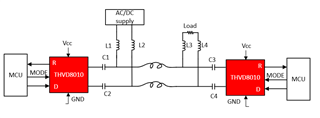Other Parts Discussed in Thread: THVD8000
Tool/software:
Hi experts,
This is Skylar responsible for GREE as an FAE.
May I ask if THVD8010 could bom-to-bom replace THVD8000 and be used in the THVD8000 EVM?
Also, may I ask if CAN transmit power as well? Why if CAN trasmits power, it will lose arbitration capability?
BR,
Skylar


